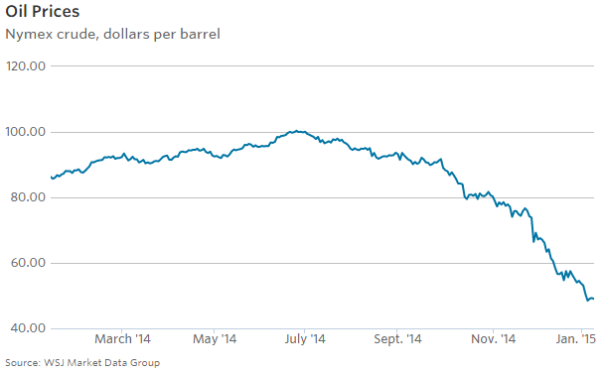Blog Archives
… Ebola
I first had the idea for this article about a year ago when MERS was popping up, but I didn’t write it. Then a few months ago, when Ebola was just beginning to rear its head, I resurrected the idea, but I didn’t follow through. I wish I had written this earlier, but nonetheless, I’m taking her home this time.
From a public health point of view, 2014 has seen an alarming number of epidemics spreading around the world. MERS is emanating from Arabia and infecting travelers worldwide. One of the most feared diseases of modern times, Ebola, is experiencing its worst outbreak in history. And the infamous Plague has appeared in Colorado and China, alarming public health workers. That’s not to mention the spread of Chikungunya (chik-en-gun-ye) in the US and Latin America, and terrifying protocol breaches at infectious disease laboratories in the US. In addition to the devastating human impact that the spread of infectious disease has, there are also acute economic impacts that are interesting to explore.
The last time that there was an epidemic of worldwide proportions was 2003, when SARS ripped across Asia and spread to others regions of the world, including Canada. The epicenter of the epidemic was Hong Kong. Due to fear of the virus spreading, people tended to avoid the public sphere. As a result, consumption plummeted. Certain retail establishment, such as restaurants and movie theaters, saw traffic decline by more than 50% during the spring of 2003. Overall, Hong Kong retail sales were 6.1% down year-over-year in March, and a whopping 15.2% in April, before fully recovering by July. In addition, travel and tourism were severely stunted during the outbreak and for a period following it. In total, Hong Kong saw 63% fewer visitors during the outbreak, and during the height of the scare air traffic fell by 77%. SARS eventually infected 8,422 people, resulting in 916 deaths. This equates to a mortality rate of 10.9%. Most remarkably, due to the public health response to the virus, all victims were identified and isolated, and SARS has been completely eradicated from the human race. There has not been a single reported case since the outbreak in 2003 was contained. It is the only disease in the history of the world that humans have achieved 100% eradication.
Ebola, on the other hand, has a much higher mortality rate. In some previous outbreaks it has reached 90%. So far in 2014 it has not infected as many people as the SARS outbreak, probably because the West African countries it is spreading through are less densely populated and have fewer interconnected socio-economic communities than East Asia. However, it is taking serious tolls on the under-developed economies. Consumption, like in Hong Kong, China, Singapore, Taiwan, and Canada, during SARS, has plummeted. Even though the virus is not spread through the air, no one wants to risk catching the disease from an infected person at the market. Plus mines, which are one of the economic engines of growth in Africa, are shuttering to prevent the spread of the disease through workers. And globally, prices for agricultural commodities such as cocoa and palm oil are increasing in anticipation of an under-productive harvest in West Africa. Lastly, foreign airlines are cancelling flights to the three infected countries – Sierra Leone, Guinea, and Liberia. And the latest news from West Africa now has the disease spreading into Senegal as well, although it seems to be contained in Nigeria.
These short-term impacts fail to mention the more dire impact on human capital. With the loss of life there is an immense loss of economic productivity for years to come. In addition, this Ebola outbreak is acutely affecting health care workers who are caring for patients. Health care workers, especially doctors, are extremely productive members of economic communities, and the affected countries will have to reinvest millions in medical education for years to come to recuperate the losses they are experiencing as their best doctors and nurses succumb. In addition, with attention being placed on Ebola, other virulent diseases are being neglected, so mortality rates are rising generally across West Africa, further sapping human capital.
The last time there was a widespread, nearly uncontrollable worldwide pandemic was 1918, when Spanish Influenza spread across the entire world and killed 40 million people worldwide, including 0.8% of the population of the United States of America. Evidence from the pandemic is hard to come by, but the main effect, similar to SARS, was a vast reduction in retail sales – the face to face interactions that often drive economic activity. However, globalization had not swept the world by 1918. Commercial air travel did not exist, and World War I was still being fought, severely limiting international travel and economic cooperation. If another global pandemic were to arise, the economic effects could be far more severe.
Although there has never been an international pandemic during the era of globalization of international air travel, we can use the experience of the 2010 eruption of Eyjafjallajökull (EH-ya-fi-AHT-la-yo-coot) on Iceland. Due to the emission of ash particles into the atmosphere, air travel across Europe was all but shut down for a week in 2010, stranding millions, stunting professional services-based economic activity, and shuttering the tourism industry for a short time. In the UK alone, 456.5 GBP was shaved off of GDP, an equivalent of 0.02% of annual GDP. This translates to more than 10,000 jobs. The impact was much larger on the airline and hospitality industries (British losses exceeded 700 million GBP), but domestic consumption, in the form of retail sales, was not affected. In fact, the stranded customers likely boosted retail sales by having to eat and sleep for an extra week.
If an infectious epidemic were to spread globally, forcing governments to close borders and ground air travel, the British and European volcanic experience could be magnified hundreds-fold. Tourism and business travel would evaporate. Plus, most forms of human economic interaction, mainly shopping and entertainment would dry up before our eyes. Shops would close, lay-offs would be massive, and most effected economies would dive head-first into recession, if not depression. Interestingly, cyber commerce may experience a boon, with consumers preferring to shop from the safety of their home computers. That is, as long as telecommunications were still properly functioning and not suffering from the loss of workers, and delivery services, such as FedEx, UPS, and the US Postal Service, were still carrying out package deliveries.
I truly hope that the current Ebola outbreak in West Africa is contained and eradicated, because the pain that victims and their families are suffering must be awful and the fear that the populations are living in absolutely stifling. And I also hope that societies around the world take this as an opportunity to optimize their public health initiatives, if only to prevent undue harm to economies, developing and developed, from epidemics and pandemics.
Sources:
http://www.hiebs.hku.hk/working_paper_updates/pdf/wp1084.pdf
http://www.bloomberg.com/news/2014-08-21/ebola-sickens-economies-of-west-africa.html
http://www.stlouisfed.org/community_development/assets/pdf/pandemic_flu_report.pdf

